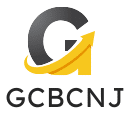What Is the Impact of IoT on Remote Learning and Education?

In the digital era, technology has become a driving force in various sectors, including education. The Internet of Things (IoT) has been instrumental in advancing learning methodologies and reshaping educational institutions’ outlook. As classrooms become more connected, students, teachers, and administrators can experience effective, streamlined, and personalized education. This piece will walk you through the impact of IoT on remote learning and education.
The Transformation of the Learning Process
With the advent of IoT, traditional classrooms have undergone a profound transformation. Students no longer have to rely solely on textbooks for their education. They can now access a plethora of information on their smart devices, anytime and anywhere. At the same time, teachers can utilize digital tools to create interactive and engaging lessons.
Sujet a lire : How Is IoT Being Used in Water Consumption Tracking and Conservation?
Institutions can leverage IoT to collect data about students’ learning patterns and performance, offering personalized learning paths. Connected devices can provide real-time feedback, allowing teachers to identify struggling students and intervene immediately. The use of smart devices can also enable students to learn at their own pace, promoting self-paced learning.
IoT also facilitates experiential learning. For instance, students can use IoT-enabled devices to conduct science experiments remotely, gather data and analyze results. Such learning experiences foster critical thinking and problem-solving skills, preparing students for the real world.
Dans le meme genre : What Role Does IoT Play in Streamlining Retail Inventory Management?
Enhancing Accessibility and Equity in Education
Education is a fundamental right, and IoT is playing a significant role in ensuring its accessibility to all. Regardless of geographical barriers, students can now access high-quality education from their homes. This has been particularly beneficial during times of crisis, such as the recent pandemic, when schools had to shut down.
IoT-based learning systems can help students with disabilities by providing adapted learning materials. For instance, smart devices with speech recognition can assist students with mobility issues, while text-to-speech converters can be an aid for visually impaired students.
Moreover, IoT can address the issue of digital divide. Many companies are coming forward to provide affordable smart devices and internet access, particularly in remote areas, making digital learning accessible to all.
Streamlining Administrative Processes
IoT is not just enhancing the teaching and learning experience, but it’s also helping to streamline administrative processes. Schools can use IoT-enabled devices to track attendance, monitor campus safety, and even manage energy usage.
Connected devices can also help manage a vast amount of student data, including academic records, health information, and behavioral patterns. This can facilitate informed decision-making, improve student outcomes, and ensure efficient school operations.
Moreover, school buses equipped with GPS, CCTV cameras, and RFID readers can ensure students’ safety during their commute, providing parents with peace of mind.
Ensuring Security and Privacy
With the increased use of IoT in education, data security and privacy have become paramount. Schools and educational institutions need to implement robust security measures to protect sensitive student data.
IoT devices should be equipped with secure encryption protocols to prevent data breaches. Schools should also have stringent policies in place about data collection and usage, ensuring transparency with students and parents.
Cybersecurity education is crucial for both students and teachers. They need to be aware of potential threats, such as phishing and malware attacks, and how to protect themselves and their devices. Schools can also employ AI-based security systems to detect and thwart potential attacks in real-time.
The Future of Education
IoT is continuously evolving, and its potential in education is immense. Future classrooms may see students interacting with AI-based tutors for personalized learning or using virtual reality for immersive learning experiences.
IoT can also enable lifelong learning. Not limited to K-12 or higher education, IoT can facilitate upskilling and reskilling for professionals. With the rapidly changing job market, continuous learning has become a necessity, and IoT can make it seamless and convenient.
In conclusion, IoT is transforming education, making it more engaging, accessible, and personalized. While challenges like data security need to be addressed, the benefits undoubtedly outweigh the risks. The future of education, with IoT at its helm, indeed looks promising.
The Role of IoT in Personalized and Inclusive Learning Environments
Education is no longer bound to a "one-size-fits-all" approach, thanks to IoT. It is making personalized learning a reality, catering to the unique needs of each student. Whether it’s a complex mathematical concept or a foreign language, IoT devices can customize the learning materials based on students’ understanding levels and learning speeds.
With IoT, teachers can keep track of students’ progress in real-time and provide individualized feedback. For instance, if a student is struggling with a topic, the teacher can instantly identify the issue and provide extra help or resources. IoT can also facilitate peer learning, where students can collaborate and learn from each other, enhancing their social and communication skills.
In addition, IoT is playing a pivotal role in creating inclusive learning environments. IoT enabled devices with features like text-to-speech or braille outputs can assist students with visual impairments. For those with hearing difficulties, these devices can provide visual cues or transcriptions during live lectures.
Furthermore, IoT can also support students with learning difficulties or attention disorders by providing interactive and engaging lessons, reducing distractions, and promoting focus and engagement. Hence, IoT technology is ensuring that education is accessible to all, regardless of their abilities or circumstances.
IoT Solutions in Streamlining Education Industry Operations
IoT is not just transforming the teaching-learning experience, but it’s also revolutionizing the way educational institutions operate. With IoT solutions, schools and colleges can automate and streamline various administrative tasks, leading to efficient and cost-effective operations.
For example, institutions can use IoT sensors to monitor the usage of electricity, water, and other resources and optimize them to reduce waste and costs. IoT devices can also automate attendance recording, eliminating manual errors, saving time, and ensuring accuracy.
Furthermore, school buses equipped with IoT devices can provide real-time updates on the bus’s location, speed, and ETA, ensuring students’ safety and reducing parents’ anxiety. Schools can also use IoT enabled devices to monitor the school premises for safety and security.
In the education sector, managing vast amounts of student data is also crucial. IoT can help in collecting, storing, and analyzing this data. It can provide insights into students’ learning patterns, health information, and behavioral trends, which can inform decision-making to enhance the students’ learning experience and overall well-being.
Conclusion: The Promising Future of IoT in Education
IoT is undeniably making significant strides in the education industry, transforming traditional classrooms into modern, connected, and inclusive learning spaces. It is enhancing the learning experience by making it more interactive, personalized, and accessible.
However, while IoT brings numerous benefits, it also raises concerns about data security and privacy. Therefore, educational institutions must take proactive measures to ensure the safety of student data. Cybersecurity education should also be an integral part of the curriculum to equip students and teachers with the necessary knowledge and skills to protect themselves against potential cyber threats.
The future of IoT in education looks exciting. With continuous innovations and advancements, IoT may soon change the face of the education sector entirely, with AI-based tutors, immersive learning experiences through virtual reality, and more.
As we continue to navigate the digital era, one thing is clear – IoT has a critical role to play in the evolution of education. While hurdles may lie ahead, the potential benefits for students, teachers, and the broader education industry are immense. Undoubtedly, IoT is paving the way for a brighter and more inclusive future for education.
